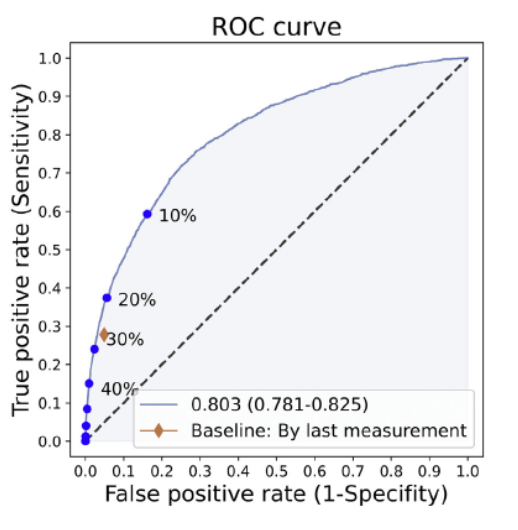Childhood obesity is a global health crisis, which holds extended complex health and psychological problems. Although an early diagnosis of children at risk for obesity could allow intervention and prevention, healthcare professionals have little guidance to identify individuals at risk. The current technology provides a method to identify individuals at high risk of developing childhood obesity before two years old, allowing early intervention and possible prevention of future obesity.
Over the past years, an alarming increase in childhood obesity has become a public health crisis, rising complex health issues, and psychological problems. It is associated with a greater risk for premature mortality and earlier onset of chronic disorders such as hypertension, dyslipidemia, ischemic heart disease, and type 2 diabetes. Identifying young children at risk could provide a critical time window for intervention by promoting healthy eating habits and encouraging physical activity. However, there is currently an underestimation of obesity by parents and physicians and there is currently little guidance for health care professionals to identify infants at risk. Therefore, there is a great need for a system/method for early diagnosis of children who are at risk of becoming obese.
Prof. Eran Segal and his team have developed a method for predicting childhood obesity based on parameters from electronic health records.1
Prof. Segal and his team analyzed children’s electronic health records (EHR) from Israel’s largest healthcare provider. They analyzed retrospective data of almost 418000 children who were obese/not obese at 13-14. Based on this data, they found that the largest annual increase in body mass index (BMI) was observed at 2-4 years of age. Therefore, they constructed a model that identifies children before the age of 2 years who will be at high risk for obesity at age 5-6 years old. The computational model uses data from EHR (or from a questionnaire) containing parameters that characterize an infant or toddler subject, utilizing a machine learning procedure trained to predict likelihoods for childhood obesity.
- Diagnosis of obesity
- Interventions that employ lifestyle interventions to reduce risk of childhood obesity
- Application within health care organization systems as novel screening systems
The group of Prof. Eran Segal fully developed the computational method for predicting childhood obesity and validated it temporally and geographically, accurately predicting obesity at 5-6 years old (area under the receiver operating characteristic curve of 0.803 – Figure 1).

Figure 1 - Evaluation of obesity prediction model: ROC curve of our model (blue) and a baseline model based on the last
available Weight-for-length routine checkup measurement (red diamond). The blue dots and percentages represent different decision probability thresholds.
Rossman H, Shilo S, Barbash-Hazan S, et al. Prediction of Childhood Obesity from Nationwide Health Records. J Pediatr. 2021;233:132-140.e1. doi:10.1016/j.jpeds.2021.02.010


